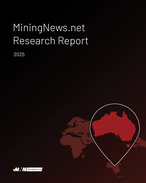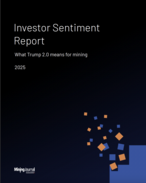This article is 11 years old. Images might not display.
Many of the forces clipping Tasmania’s timber industry are familiar to miners, particularly the stubbornly strong Australian dollar.
But the effects of environmental influence on the island, although difficult to quantify, are likely to be a greater business factor than in other parts of the country.
As of 2009-10, mineral extraction accounted for half of mercantile exports from Tasmania with a value of $A1.6 billion, coinciding with industry and government assessments that the state is on the cusp of a minerals boom time.
Deputy Premier Bryan Green recently tallied more than 2000 new mining jobs in the state over the past two years and applauded a recent federal decision not to heritage-list most of the island’s mineral-rich Tarkine wilderness region.
However, developments such as these have been noted for spurring a shift in focus among some of the country’s more effective environmental lobbies.
Following a protest at the Tasmanian Minerals Council’s annual conference last week in Hobart, a federal court halted construction of Shree Minerals’ Tarkine iron ore project sought by the Save the Tarkine movement.
Groups including the Wilderness Society, GetUp!, the Tarkine National Coalition and the National Heritage council either directly pushed for the injunction or have otherwise recommended protection of the area which is Australia's largest tract of temperate rainforest and the home of some 60 rare, endangered or threatened species.
The increasingly evident influence of environmentalists on the growth of Tasmanian mining is beginning to shape political squabbles once mostly reserved for the logging industry.
“Having shut down forestry, with the assistance of Labor, the Greens and ENGOs [environmental non-governmental organisations] have now moved onto mining,” Tasmanian Liberal MP Adam Brooks said in a recent statement.
“By rolling over to the Greens and EGNOs on forestry, Labor have simply encouraged and emboldened them to ramp up their campaign against mining.
“Bryan Green let the genie out of the bottle when he shut down the forestry industry to keep the Greens happy.”
Farms have also been a focal point of anti-mining sentiment.
Last week a farmer in the central town of Mole Creek reportedly contacted the Tasmanian Public and Environmental Health Network (TPEHN) and locked his 486-hectare property on undisclosed mining companies after helicopter surveys were conducted in the area.
TPEHN said it was concerned about the increase in mining proposals on Tasmanian farmland and had recently joined the national Lock the Gate Alliance in its campaign against inappropriate mining in agricultural areas.
The Tarkine controversy, however, is still firmly at the heart of the recent rumblings which portent Tasmania's activists are making mining the state’s next flashpoint.
As the issue intensifies, the Tarkine National Coalition is beginning to evoke flashbacks and parallels to one of the most momentous environmental campaigns in Australian history when Tasmania’s Franklin River protests of the late 1970s and early 1980s resulted in World Heritage listing of a proposed hydroelectric area.
Coalition head Scott Jordan has vowed the group would ramp up its efforts in the region.
Jordan told MiningNewsPremium.net today that the group had received federal Environment Minister Tony Burke’s decision points on rejecting heritage status of the Tarkine and was considering what further action it could take.
Like many interested parties, he believes public opinion will be the turning point on the overall issue.
“We had some polling done and put the question ‘do you support the creation of a Trakine national park?’ and we had 72% of people in northwest Tasmania supporting,” he said.
“We believe across the whole of the country people are outraged that this area that has been identified as having both national heritage and world heritage values is being earmarked for open cut mines.”
Supporters of Tarkine development are likewise claiming to have won hearts and minds with Deputy Premier Green saying the government and environmentalists had established “an enormous amount of good will.”
In an effort to downplay suggestions mining would be the state’s next industry of contention, Green told the ABC that the current battles over mining projects in the state would not be as severe and drawn-out as the forest conflict.
“The forestry industry moved from coupe to coupe, it was always a different battlefield every day of the week,” he said.
“The Rosebery mine has existed for 75 years.
“So the fact is you can have an argument about a mine but once a mine’s established, it could be there for 30-40 years. There’s not another coupe over the hill to argue about.”
The most recent major victory for Tasmanian environmentalists was the passing into law earlier this month of the Tasmanian Forests Agreement, also known as the “forestry peace treaty."
The deal was deemed the end of a war by Premier Lara Giddings and included some $400 million in government funding to create forestry reserves across 500,000 hectares.
Burke said the rest of the country had not even come close to what Tasmania achieved in passing the agreement.
Although it’s a given trees and minerals are not the same game, Tasmanian mining hopefuls may do well to take note of the state’s political history regarding resources and consider that they may have to one day negotiate a peace treaty of their own.























